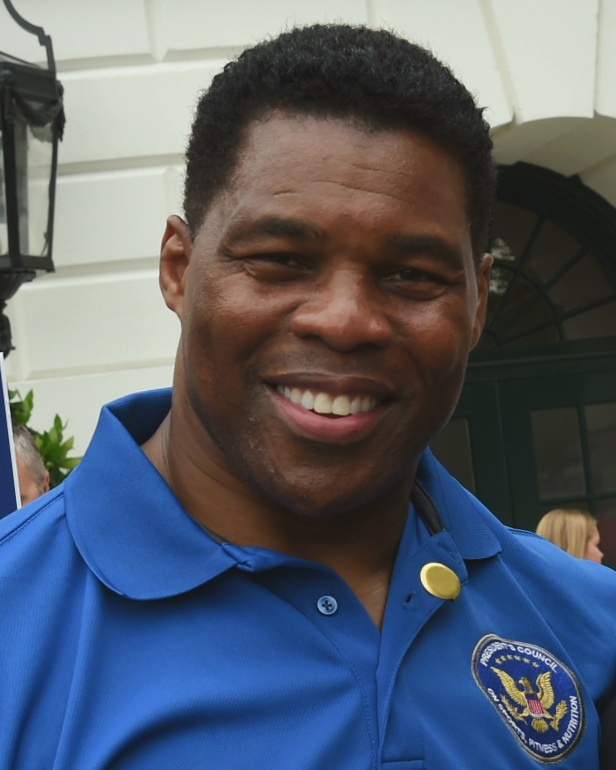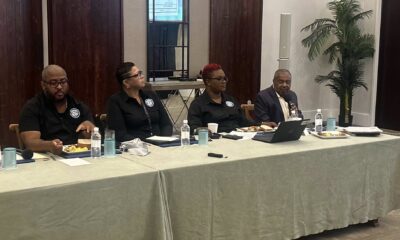Bahamas News
Remote Bahamian Waters Reveal Fragile Balance of Life
Published
1 year agoon

Scientists discover both resilience and alarming threats in Little Inagua
Aug 29, 2024 – NASSAU | A recent scientific expedition led by the Perry Institute for Marine Science (PIMS), with participation from The Bahamas National Trust (BNT), has uncovered critical insights into the health of coral reefs and seagrass beds surrounding Little Inagua, a secluded island in the southern Bahamas. The International SeaKeepers Society provided significant financial support and facilitated the expedition by connecting the team with the research vessel Awatea. The findings could play a crucial role in shaping future conservation strategies for one of the Caribbean’s most pristine marine ecosystems.
Last month’s mission was the first of its kind in over a decade and explored the island’s remote underwater habitats within the protected boundaries of the Little Inagua National Park. Spanning approximately 62,800 acres, it is The Bahamas’ third-largest national park and the largest uninhabited island in the region, remaining a beacon of untouched biodiversity. Yet, as the research team discovered, even these isolated waters are not immune to the pressures threatening marine life globally.
Stony Coral Tissue Loss Disease (SCTLD) is a rapidly spreading threat in The Bahamas and the wider Caribbean, affecting over 20 coral species. The disease causes corals to lose tissue quickly, often leading to death and endangering the reefs that protect coastlines and support fisheries.
“Our surveys revealed both hope and concern,” said Dr. Krista Sherman, Senior Scientist at PIMS and the expedition’s lead researcher. “While we found resilient coral colonies and thriving seagrass beds that support critical fisheries, we also documented signs of Stony Coral Tissue Loss Disease (SCTLD) and bleaching that highlight the fragility of these ecosystems.”

Healthy seagrass beds in Little Inagua, providing essential habitat and supporting the rich biodiversity of the region’s marine life. Photo Credit: Haley Davis, SeaKeepers
“This park is one of 33 national parks managed by BNT, but it has been, for many years, a mystery. It’s remote, a bit secluded, and yet so beautiful,” said Lindy Knowles, Senior Science Officer at BNT. “We now have a better idea of how the habitats in the park are doing. Corals have been bombarded by SCTLD but the seagrass beds are intact, which shows that the entire system is relatively stable.”
Resilience Amidst Challenges: The Findings
The expedition’s team, comprising scientists from PIMS and BNT, surveyed 17 sites, including 13 coral reefs and four seagrass beds, some of which were last studied in 2011. The assessment revealed both promising and concerning results. Encouragingly, large colonies of mountainous star corals (Orbicella species) and boulder corals exhibited strong health, with no signs of disease or bleaching in certain locations. However, these bright spots were overshadowed by the widespread death of pillar corals (Dendrogyra cylindrus) and the death of historically robust stands of elkhorn (Acropora palmata) and staghorn corals (Acropora cervicornis) from bleaching.
Dr. Valeria Pizarro, senior scientist and coral expert at PIMS, emphasized the significance of these findings. “I was so happy to see juveniles of the smooth flower coral after SCTLD has killed most of these colonies in other parts of The Bahamas. Unfortunately, pillar coral, also known as the Caribbean unicorn, seems to be wiped out by SCTLD. We only saw standing dead colonies.”

Queen conch thriving in the seagrass beds of Little Inagua, a key species for both local fisheries and marine biodiversity, highlighting the importance of protecting these vital habitats. Photo Credit: Haley Davis, SeaKeepers
While the coral reefs showed mixed signs of health, the seagrass beds remain in good condition, providing essential habitat for commercially valuable species.
A Glimpse into Little Inagua’s Rich Marine Life
Despite the challenges facing the coral reefs, Little Inagua’s waters continue to support diverse marine life. The team reported sightings of turtles, stingrays, and various shark species, along with large predators like groupers, snappers, and barracudas. Dr. Krista Sherman, Senior Scientist at PIMS and the expedition’s lead researcher, commented: “I don’t remember ever seeing so many coneys and barracudas. It was also really cool to consistently see black durgon and sargassum triggerfish at some sites since they’re not typical in other parts of the country.”
Economically important species like the Caribbean spiny lobster (Panulirus argus) and queen conch (Aliger gigas) were also observed in abundance, signaling potential long-term benefits for surrounding fisheries.
A Mission Made Possible Through Collaboration
The expedition’s success was the result of collaboration between multiple organizations, including PIMS, BNT, and SeaKeepers. The research team spent nearly two weeks aboard Awatea, a 63-foot sailing catamaran provided through SeaKeepers’ DISCOVERY Yacht Program. By utilizing this incredible resource, the expedition not only minimized its carbon footprint but also significantly reduced costs compared to chartering a vessel independently.
Haley Davis, Citizen Science Manager for SeaKeepers, expressed pride in supporting the mission: “We are excited about the opportunity to engage private vessels for important scientific work and we are more than happy to have used the Awatea as a low-carbon option for this two week liveaboard voyage.”

Lindy Knowles from the Bahamas National Trust conducting a survey of seagrass beds in the pristine waters of Little Inagua, as part of an expedition to assess and protect vital marine habitats. Photo Credit: Haley Davis, SeaKeepers
The expedition was funded through a grant to the Perry Institute for Marine Science from the Moore Bahamas Foundation, The Bahamas National Trust, and SeaKeepers.
Looking Ahead: The Future of Little Inagua’s Conservation
While it may be years before another comprehensive survey is conducted in this remote region, the data gathered will inform ongoing conservation efforts and provide a baseline for measuring future changes. Dr. Sherman said: “The data we collected over the course of this expedition will be analyzed in the coming months. This information will be important to help protect biodiversity and preserve the integrity and function of Little Inagua’s marine ecosystems.”
As The Bahamas faces escalating environmental challenges from climate change, coral disease, overfishing, and pollution, the insights from Little Inagua highlight both the vulnerabilities and strengths of its marine environments. The findings are a reminder that even in the most remote corners of the archipelago, urgent action is needed to preserve the country’s natural heritage for generations to come.
Link to expedition video footage: https://vimeo.com/995499389/cec871e358

Healthy boulder star corals thrive in the protected waters of Little Inagua, highlighting the resilience and beauty of these coral colonies despite environmental challenges.
About the Perry Institute for Marine Science (PIMS)
For over 50 years, the Perry Institute for Marine Science (PIMS) has been at the forefront of marine research and conservation in The Bahamas and the Caribbean. Our mission is clear: leading through science, we innovate solutions, create opportunities, and inspire action to protect and restore ocean life for people and the planet. Our vision? Thriving seas and empowered communities.
From our beginnings as the most productive marine lab and field station in the world on Lee Stocking Island, we’ve evolved into a global, program-based non-profit tackling critical issues such as coral reef restoration, fisheries conservation, and the protection of mangrove and coastal ecosystems. Our holistic approach integrates cutting-edge scientific research with community education and engagement, as well as international collaboration to make lasting impacts on marine environments.
At PIMS, we’re more than just scientists—we’re educators, advocates, and partners. We empower local communities, provide pathways to conservation careers, and work tirelessly to protect and restore the ocean ecosystems that are vital to both biodiversity and human well-being.
About The Bahamas National Trust
The Bahamas National Trust (BNT) was created by an Act of Parliament in 1959 to build and manage the national park system of The Bahamas. Possibly the only non-governmental organization in the world charged with such a responsibility, the BNT works daily to conserve and protect the natural resources of The Bahamas through science, stewardship, and education for present and future generations. There are currently 33 National Parks managed by the BNT, with more than 2 million acres of marine and terrestrial areas protected.

In stark contrast, bleached star coral colonies in Little Inagua reveal the severe toll environmental stressors can take on marine ecosystems.
About The International SeaKeepers Society
The International SeaKeepers Society is a not-for-profit 501(c)(3) organization that facilitates oceanographic research, conservation, and education through direct involvement with the yachting community. Providing educational resources and hands-on marine science experiences to students is the primary focus for ensuring the wellbeing of our planet. SeaKeepers enables the yachting community to take full advantage of their unique potential to advance marine sciences and raise awareness about global ocean issues.
Founded in Monaco in 1998, The International SeaKeepers Society has been supporting ocean conservation through direct involvement with the yachting community for more than twenty-five years. What started as a data collection program aboard select luxury yachts, has evolved to engage thousands of participants annually with at-sea and coastal programming. Today SeaKeepers’ mission is focused on the DISCOVERY Yacht Program which is comprised of Scientist-Led Expeditions, Citizen Science, Educational Outreach, and Community Engagement.
As a catalyst working with governments, scientists, institutions, and other marine organizations to further its mission, SeaKeepers supports sensible, achievable marine protection and restoration. Activities take place globally through the efforts of headquarters based in the United States with offices located on the east and west coast, and international representation in Singapore, the United Kingdom, and the South Pacific. For more information, please visit www.seakeepers.org.
Dr. Krista Sherman, Lindy Knowles, and Dr. Valeria Pizarro, key leaders of the expedition studying Little Inagua’s coral reefs and seagrass beds, working together to uncover vital insights for conservation.
Haley Davis, Citizen Science Manager at The International SeaKeepers Society, who facilitated the expedition by connecting the research team with the vessel Awatea.
You may like
-


BNT Rallies Support for Seahorse National Park at Fundraising Event in Eleuthera
-


BNT Applauds Competition Winner Dillon Evans for Inspiring Conservation Action Among Peers
-


BNT Members Take a Deep Dive into the Caves of Lucayan National Park at Special Event
-


Young Bahamian Storytellers Use Media to Highlight Conservation in The Bahamas
-


BNT Releases 2023-2024 Impact Report Highlighting Conservation Achievements
-


Bahamas National Trust Announces New Executive Board Members
Bahamas News
Walker Confirmed as U.S. Ambassador to The Bahamas: A Partner in America’s Extended Family
Published
2 months agoon
October 14, 2025
By Deandrea Hamilton | Magnetic Media
The United States and The Bahamas share more than proximity — they share a bond of history, trade, and culture that Washington’s newest diplomat calls “part of America’s extended community.”
Now, for the first time in 14 years, the U.S. Embassy in Nassau will again be led by a Senate-confirmed ambassador. Herschel Walker, the Heisman-winning football legend turned entrepreneur, has been confirmed by the U.S. Senate as America’s official envoy to The Bahamas.
Walker, who will oversee one of the Caribbean’s most strategically positioned U.S. missions, told senators during his confirmation hearing that The Bahamas will play a key role in upcoming U.S. 250th Independence celebrations. “The Bahamian people,” he said, “will be included in this milestone year, because our stories are intertwined — through family, trade, and friendship.”
While his nomination was unconventional, his priorities are anything but vague. Walker vowed to counter growing Chinese influence in the Caribbean, calling Beijing’s investments in Bahamian deep-water ports “a direct threat to U.S. national security.” He pledged to work closely with Bahamian authorities to ensure American interests remain the region’s cornerstone.
“There’s a rise in drug smuggling in The Bahamas, and this is a real danger to the United States,” Walker said, referring to the Operation Bahamas, Turks and Caicos (OPBAT) partnership. He promised to strengthen intelligence sharing, joint patrols, and law enforcement coordination to disrupt trafficking routes that have grown increasingly sophisticated.
But Walker also emphasized opportunity over fear — signaling that his ambassadorship will not only focus on security, but on strengthening The Bahamas as a gateway for U.S. investment, trade, and tourism.
“I will advise the American business community of the vast investment opportunities that exist in The Bahamas,” he said. “And I will make sure the Bahamian government maintains an environment where U.S. companies can invest confidently — because America must prove it is still great as an investor.”
For a small island nation sitting less than 50 miles off the coast of Florida, this renewed diplomatic attention carries weight. Since 2011, the post of U.S. ambassador had remained vacant — a gap that many observers say weakened direct ties, delayed joint security initiatives, and allowed other powers to move in.
Walker’s confirmation — approved 51 to 47 — ends that silence. And with it comes the expectation that this former Olympian and business owner will translate his discipline, charisma, and resilience into diplomatic results.
Critics question his lack of foreign policy experience, but Walker counters with confidence: “Throughout my life, people have underestimated me. I’ve always proved them wrong — by outworking everyone.”
As he prepares to take up residence in Nassau, Walker says his mission is simple: rebuild trust, deepen cooperation, and remind both nations that their futures are tied not just by geography — but by shared purpose, mutual respect, and the enduring ties of community.
Angle by Deandrea Hamilton. Built with ChatGPT (AI). Magnetic Media — CAPTURING LIFE.
Bahamas News
PAY STANDOFF: Prime Minister Cancels Talks as Unions Warn of More Protests
Published
2 months agoon
October 13, 2025
By Deandrea Hamilton | Magnetic Media
Monday, October 13, 2025 — Nassau, The Bahamas – What began as a calm holiday meeting has spiraled into a full-blown standoff between The Bahamas Government and two of the country’s most powerful public sector unions — the Bahamas Union of Teachers (BUT) and the Bahamas Public Services Union (BPSU) — after the Prime Minister abruptly cancelled follow-up talks set for Tuesday, blaming public comments made by union leaders.
The announcement of the cancelled meeting came late Monday, just hours after a tense sit-down at the Office of the Prime Minister, held on National Heroes Day, where both BUT President Belinda Wilson and BPSU President Kimsley Ferguson accused the government of dragging its feet on salary increases and retroactive pay owed to thousands of public officers.
Wilson, never one to mince words, said the Prime Minister’s “technical officers” — the very people responsible for executing his instructions — were failing to carry out his directives regarding payment timelines.
“The Prime Minister’s issue,” Wilson said, “is that he has persons working for him who are not following his instructions. If those officers would follow through on what he told them to do, we wouldn’t be here today.”
Wilson added that the BUT and other unions are demanding retroactive pay dating back to September 2024, and that all increases be applied and paid by the October payday, not December as previously stated by the Prime Minister.
“Senior civil servants already received their retroactive pay — thousands of dollars — backdated to September of last year,” Wilson charged. “We’re saying the small man deserves the same. This isn’t a gift. It’s money already earned.”
Her comments came after the government publicly insisted that the salary adjustments would be implemented by December 2025, just ahead of Christmas — a timeline unions flatly reject as too slow.
Ferguson: ‘No More Excuses’
Following Wilson, BPSU President Kimsley Ferguson delivered a fiery statement of his own, telling reporters the unions would no longer tolerate delays or mixed messages from the Davis administration.
“The Prime Minister was receptive — but we’re not accepting excuses,” Ferguson said. “If the Prime Minister’s having a memory lapse, we have the Hansard from Parliament to remind him exactly what he promised public officers.”
Ferguson went further, warning that if Tuesday’s meeting failed to produce results, unions would “visit the House of Assembly” and intensify their campaign for immediate payment.
“Public servants, ready yourselves,” he declared. “We are prepared to stand together — all across The Bahamas — until our needs are met.”
Now, with the Prime Minister cancelling tomorrow’s talks altogether, that threat appears closer to becoming reality.
Government Bungles Response
Observers say the administration’s handling of the matter has been confused and contradictory, with conflicting statements on payment timelines and poor communication fueling frustration among teachers, nurses, and general public officers.
The government has maintained that the funds are allocated and will be disbursed before year’s end, but unionists insist they’ve heard it all before — and this time they want results, not promises.
The Prime Minister’s decision to cancel the meeting, rather than clarify or de-escalate tensions, has drawn sharp criticism across social media and among rank-and-file civil servants who see the move as punitive and dismissive.
Slowdown and the Threat of Another Mass Protest
Across several ministries, departments, and schools, reports are already surfacing of a go-slow in the public service, as workers express solidarity with the unions’ demands.
Many believe another mass demonstration is imminent, similar to the one staged last week Tuesday when thousands of workers gathered outside the House of Assembly on Bay Street as Parliament reopened after summer recess.
That protest brought parts of downtown Nassau to a standstill as union members sang, marched, and even sat in the street — a powerful show of defiance that now threatens to repeat itself unless the government moves quickly to resolve the impasse.
A Political Flashpoint
What began as a straightforward salary dispute has now evolved into a test of credibility and competence for the Davis administration. With a restless public sector, rising inflation, and unions unified across professions, the government risks not only another protest — but a full-blown industrial crisis heading into the year’s end.
For now, the unions are standing firm: they want retroactive pay from September 2024 and full salary adjustments by this October. Anything less, they warn, could push the country’s workforce from a slowdown into open confrontation.
Angle by Deandrea Hamilton. Built with ChatGPT (AI). Magnetic Media — CAPTURING LIFE.
Bahamas News
Nassau Cruise Port Marks Sixth Anniversary with Exciting New Additions for Visitors and The community
Published
2 months agoon
October 8, 2025
[Nassau, Bahamas, October 8, 2025] Nassau Cruise Port (NCP) proudly celebrates its sixth corporate anniversary by unveiling a series of transformative additions that further enhance the guest and community experience. The anniversary comes at a pivotal moment in the growth of the port, with the opening of a new swimming pool, an expanded marina, and a state-of-the-art ferry terminal that will support transfers to the Royal Beach Club, which is currently under construction on Paradise Island.
Since its $300 million redevelopment, Nassau Cruise Port – the largest transit cruise port in the world – has welcomed millions of visitors and become one of the most vibrant cruise destinations in the world. This anniversary not only reflects its commitment to delivering world-class facilities, but also its dedication to creating meaningful connections between visitors and the Bahamian community.
“This milestone represents much more than the passage of time,” said Mike Maura, Jr., CEO and Director of Nassau Cruise Port. “It reflects our promise to continually elevate the guest experience, contribute to the local economy, and provide opportunities for Bahamians. During our first year (2019) of operating the Nassau Cruise Port, Nassau welcomed approximately. 3.85 million cruise guests, and 2025 will see well over 6 million cruise visitors visit Nassau. Our focus on driving cruise tourism and the $350 million investment in our downtown waterfront is a testament to our vision of making Nassau a premier cruise and leisure destination.”
The new pool offers a refreshing retreat for visitors enjoying Nassau’s waterfront, while the expanded marina will accommodate additional yachts, boosting tourism and local commerce. The ferry terminal expansion enhances passenger flow and supports convenient, seamless transfers to the Royal Beach Club, strengthening Nassau’s position as a hub for Caribbean cruising and leisure.
As part of its anniversary celebrations, NCP will host a series of internal and external activities to celebrate its team and to highlight its ongoing investments in the Bahamian economy, including job creation, local vendor opportunities, and cultural showcases at the port.














